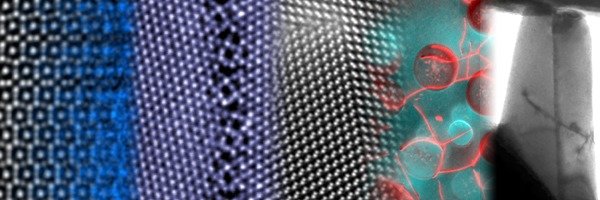
Grain Boundary Segregation Phenomena
In the first part of our study we shed new light on sulfur (S)–induced embrittlement in copper (Cu). Here we investigate the mechanical properties, microstructure and chemistry in Cu alloys in dependence of the S concentration ranging from 7 wt. ppm to 0.4 wt. %. The material contains mainly random GBs with an average grain size of about 2 mm. Within the statistical limits of transmission electron microscopy techniques and atom probe tomography, no indication for solute segregation was found for all alloys. In the alloy containing 0.4 wt. % S, incoherent, nano- and micron sized monoclinic Cu2S precipitates, known as low chalcocite, where found in the alloy (see Figure 1). Our hypothesis is that these brittle sulfides are responsible for the strength increase and the reduction in ductility.

Figure 1: Electron backscatter diffraction map of a polished Cu alloy with 0.4 wt. % sulfur.HAADF-STEM images of a GB with the accompanying STEM-EDS sulfur map (sulfur signal in red) showing Cu2S precipitates in the grains and at the GB.
![Figure 2: HAADF – STEM image of a Σ19b [111] {532} symmetrical tilt boundary. The inset shows a molecular dynamics simulation (Dr. T. Frolov, Lawrence Livermore National Laboratory) that perfectly reproduces the structural units of the boundary.](/3754853/original-1518446993.jpg?t=eyJ3aWR0aCI6OTY2LCJvYmpfaWQiOjM3NTQ4NTN9--52e52536771d8ea82204d8cb39b1aa28764f0722)
Figure 2: HAADF – STEM image of a Σ19b [111] {532} symmetrical tilt boundary. The inset shows a molecular dynamics simulation (Dr. T. Frolov, Lawrence Livermore National Laboratory) that perfectly reproduces the structural units of the boundary.
In the second part of this study we focus on the structure and segregation phenomena at [111] tilt GBs in defined copper thin films. By the growth of polycrystalline copper thin films on Al2O3, the type and fraction of [111] tilt GBs can be precisely controlled. Figure 2 exemplary shows the atomic resolution STEM image of a Σ19b [111]{532} symmetric tilt GB. In combination with atomistic simulations (inset of Figure 2) a deeper insight in the structure-property correlation of such GBs will be established. In future investigations, a systematic study on the impact on the atomic structure and properties of such GBs by interstitial and substitutional impurity elements is anticipated to establish first guidelines towards grain boundary engineering.

![Figure 2: HAADF – STEM image of a Σ19b [111] {532} symmetrical tilt boundary. The inset shows a molecular dynamics simulation (Dr. T. Frolov, Lawrence Livermore National Laboratory) that perfectly reproduces the structural units of the boundary. Figure 2: HAADF – STEM image of a Σ19b [111] {532} symmetrical tilt boundary. The inset shows a molecular dynamics simulation (Dr. T. Frolov, Lawrence Livermore National Laboratory) that perfectly reproduces the structural units of the boundary.](/3754853/original-1518446993.jpg?t=eyJ3aWR0aCI6MzQxLCJmaWxlX2V4dGVuc2lvbiI6ImpwZyIsIm9ial9pZCI6Mzc1NDg1M30%3D--46c619226d0e53034f6830082235375b53836542)